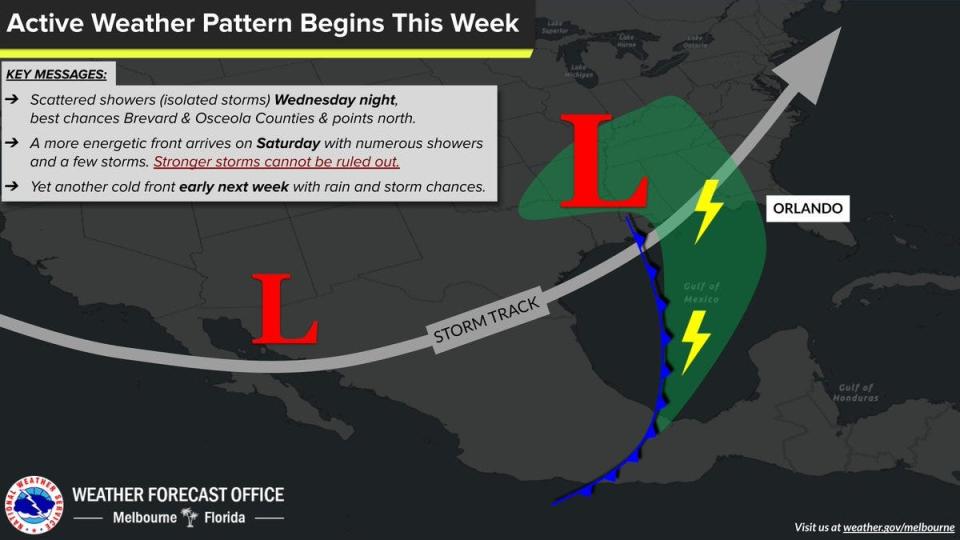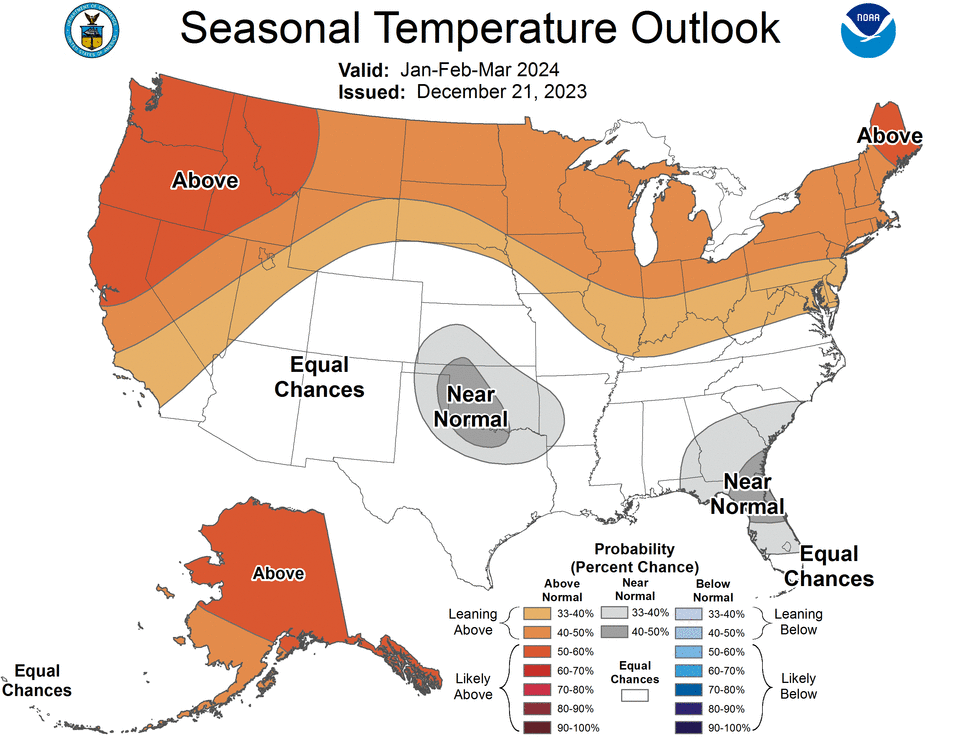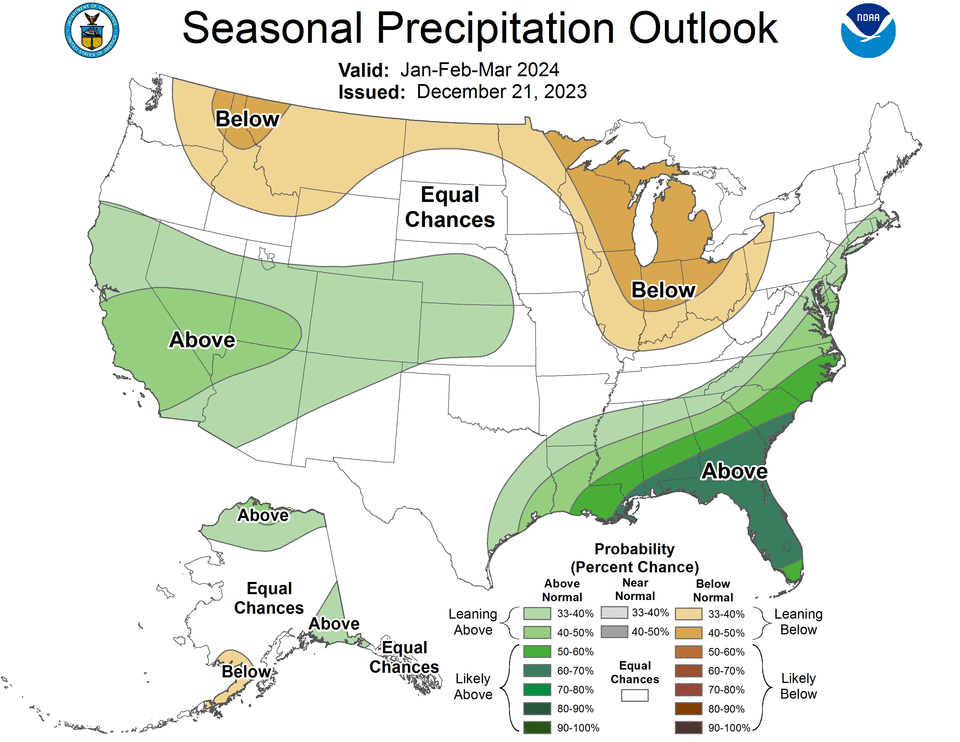Tired of winter and Florida cold? Here's when spring 2024 officially arrives
The holidays are over, and so is 2023.
Now that 2024 has arrived, there's plenty to look forward to.
It's a big election year, it's a leap year, there will be both a total lunar and total solar eclipse, and there will be the Paris Olympics.
So the big question is: When will spring get here?
Not any time soon, at least when it comes to temperatures, based on the latest forecast predictions.
Expect cold fronts to continue to drive Florida temperatures down

While Florida hasn't experienced the storms seen in other parts of the country this winter, cold fronts have prompted counties across the state to open cold-weather shelters over the past week.
And Mother Nature isn't done yet.
"Multiple cold fronts will cross the Florida Peninsula over the next week, delivering us rain and storm chances," the National Weather Service Melbourne tweeted Tuesday.
A dry cold front moved across the state Tuesday, bringing another round of cooler and drier air across the state.
Below-normal high temperatures in the middle to upper 50s were expected across North Florida Jan. 2, while Central and South Florida were expected to see high temperatures in the 60s to low 70s by the afternoon, according to the Florida Division of Emergency Management.
Another system will be moving toward Florida and some areas could see isolated showers starting Tuesday night. Most rainfall won't arrive until Wednesday.
Low temperatures overnight will fall into the middle to upper 30s along the I-10 corridor. There is a chance for a patchy frost and a brief light freezeduring the overnight and early morning hours across the Suwannee River Valley and Northeast Florida, depending on cloud cover.
Coastal areas across North Florida can expect low temperatures in the low 40s overnight.
Interior Central and South Florida will see low temperatures in the middle to upper 40s and low 50s, while coastal areas will see low temperatures in the middle to upper 50s.
The Florida Keys can expect low temperatures in the low 60s.
When will spring 2024 get here?
Spring, or the vernal equinox, will arrive at 11:06 p.m. EDT on March 19, according to the U.S. Naval Observatory.
What is the vernal equinox?
There are two times of the year when the earth's axis is tilted neither toward nor away from the sun, resulting in a almost an equal amount of daylight and darkness at all latitudes, according to the National Weather Service.
Those are the equinoxes.
The March or spring equinox in the Northern Hemisphere marks the sun’s crossing above the Earth’s equator, moving from south to north, according to EarthSky.
How is an equinox different from a solstice?
The summer solstice occurs at the moment the earth's tilt toward the sun is at a maximum. It marks the longest day and shortest night of the year.
The winter solstice marks the shortest day and longest night of the year, when the earth's tilt away from the sun is at a maximum. In the Northern Hemisphere, it occurs when the sun is directly over the Tropic of Capricorn.
There are meteorological and astronomical seasons
Meteorological and astronomical seasons begin and end on different dates. The reason has to do with how each are defined.
Astronomical seasons are based on the position of Earth in relation to the sun, whereas the meteorological seasons are based on the annual temperature cycle, according to the National Centers for Environmental Information.
Meteorological seasons are the three-month periods we commonly refer to when talking about spring, summer, fall and winter.
According to National Centers for Environmental Information, meteorological seasons were created because traditional seasons varied from 89 to 93 days. That made it difficult to compare statistics from one year to another.
Astronomical seasons are based on the position of the earth as it makes its annual trip around the sun, according to NOAA. Seasons are defined by two solstices and two equinoxes.
The four meteorological seasons
For meteorologists, seasons are defined by the months with temperatures and weather often associated with each.
Spring: March, April, May.
Summer: June, July, August.
Fall: September, October, November.
Winter: December, January, February.
The four astronomical seasons of 2024
Vernal equinox (spring): March 19, 11:06 p.m. EDT
Summer solstice: June 20, 4:51 pm. EDT
Autumnal equiniox (fall): Sept. 22, 8:44 a.m. EDT
Winter solstice: Dec. 21, 4:21 a.m. EST
Florida seasonal outlook for January though March

NOAA's seasonal outlook for Florida calls for near normal temperatures for January through March.
Florida precipitation outlook for January though March

The seasonal outlook calls for above average chances for precipitation for January through March.
This article originally appeared on Treasure Coast Newspapers: When is spring 2024? What to know about vernal equinox

